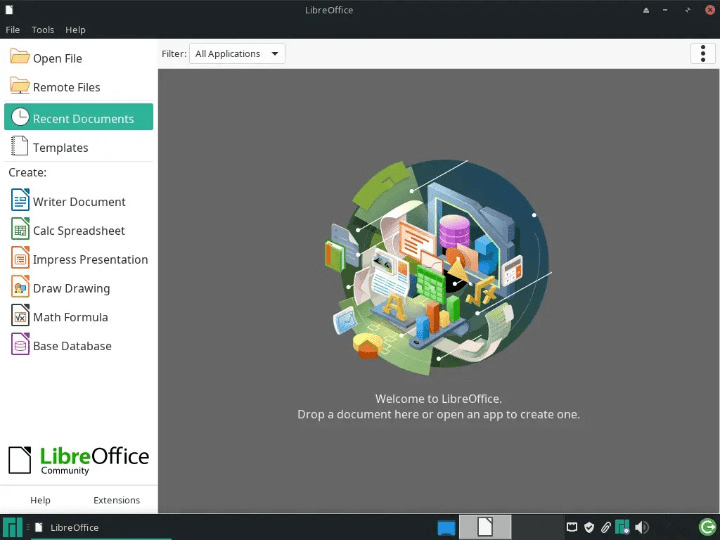How To Install LibreOffice on Fedora 41

LibreOffice is a powerful open-source office suite that provides a comprehensive set of tools for word processing, spreadsheets, presentations, graphics, and more. With its robust features and compatibility with various file formats, it has become a popular choice among Linux users. This article will guide you through the process of installing LibreOffice on Fedora 41, ensuring you have all the necessary information to get started smoothly.
System Requirements
Before diving into the installation process, it’s essential to understand the system requirements for running LibreOffice on Fedora 41. Here are the key specifications:
- Minimum RAM: 2 GB (4 GB recommended for optimal performance)
- Disk Space: At least 1.5 GB of free space for installation
- Operating System: Fedora 41 or later versions
- Dependencies: Ensure you have glibc, X Server, and other basic libraries installed
Preparing for Installation
Preparation is crucial to ensure a smooth installation process. Follow these steps to prepare your Fedora system:
- Update Your System: Open a terminal and run the following command to update your system packages:
sudo dnf update - Enable Necessary Repositories: You may need to enable additional repositories such as EPEL (Extra Packages for Enterprise Linux) for some dependencies. Use this command:
sudo dnf install epel-release - Install Required Dependencies: If you plan to use Java features in LibreOffice, ensure Java is installed. You can install OpenJDK with the following command:
sudo dnf install java-11-openjdk
Methods to Install LibreOffice
There are two primary methods to install LibreOffice on Fedora 41: using DNF and manual installation from a tarball. Below are detailed instructions for both methods.
Using DNF
The simplest way to install LibreOffice is through the DNF package manager. Follow these steps:
- Open Terminal: You can open the terminal from your applications menu or by pressing
Ctrl + Alt + T. - Install LibreOffice: Run the following command to install LibreOffice along with its components:
sudo dnf install libreoffice - Confirm Installation: The terminal will prompt you to confirm the installation by showing the total size of the download and asking for your approval. Type
yand press Enter. - Wait for Installation to Complete: The installation process may take a few minutes depending on your internet speed and system performance.
Using Manual Installation from Tarball
If you prefer to install LibreOffice manually or need a specific version, follow these steps:
- Download the Tarball: Navigating to the official LibreOffice website, download the latest tarball version suitable for your architecture (32-bit or 64-bit).
- Open Terminal and Navigate to Downloads Folder:
cd ~/Downloads - Extract the Tarball:You can extract the downloaded tarball using this command (replace filename with your actual downloaded file):
tar -xvzf libreoffice-*.tar.gz - Navigating into Extracted Directory:
cd libreoffice-*/DEBS - Install LibreOffice Packages:You will find several .deb files in this directory. Install them using the following command:
sudo dpkg -i *.deb - Navigating into Desktop Integration Directory:
cd desktop-integration/ - Install Desktop Integration Packages:
sudo dpkg -i *.deb - Cleansing Unused Packages (Optional):
sudo apt-get autoremove
Verifying Installation
A successful installation can be confirmed by checking the version of LibreOffice installed on your system. Here’s how you can do it:
- Lauch LibreOffice: You can find LibreOffice in your applications menu or launch it via terminal by typing:
/usr/bin/libreoffice --version - If Installed Correctly, You Will See Version Info Displayed.

Configuring LibreOffice
After installation, configuring LibreOffice according to your preferences enhances usability. Here are some configuration options available post-installation:
- User Directories and Preferences:
Configure user-specific directories for documents, templates, and styles through Tools > Options > Paths. - Add Language Packs and Extensions:
Explore additional language packs via Tools > Options > Language Settings > Languages. You can also install extensions from Extensions Manager. - Edit Configuration Files (Advanced):
Configuration files are located in~/.config/libreoffice/. You can manually edit these files for advanced settings.
Common Troubleshooting Tips
If you encounter issues during or after installation, here are some common troubleshooting tips that might help resolve them:
- Error Messages During Installation: If you face permission errors, ensure you are using sudo before commands that require administrative privileges.
- Missing Libraries: If certain libraries are missing during installation, use DNF to install them individually or check if they are available in enabled repositories.
- Lack of Functionality: If features like Java integration do not work as expected, ensure that Java is correctly installed and configured in Tools > Options > LibreOffice > Advanced.
- No Launch After Installation: If LibreOffice does not launch after installation, try running it from the terminal to see any error messages that can guide troubleshooting.
- Sourcing Help: If problems persist, consider visiting forums like Ask Fedora or the official LibreOffice community forums for assistance.
Congratulations! You have successfully installed LibreOffice. Thanks for using this tutorial for installing LibreOffice on your Fedora 41 system. For additional Apache or useful information, we recommend you check the official LibreOffice website.